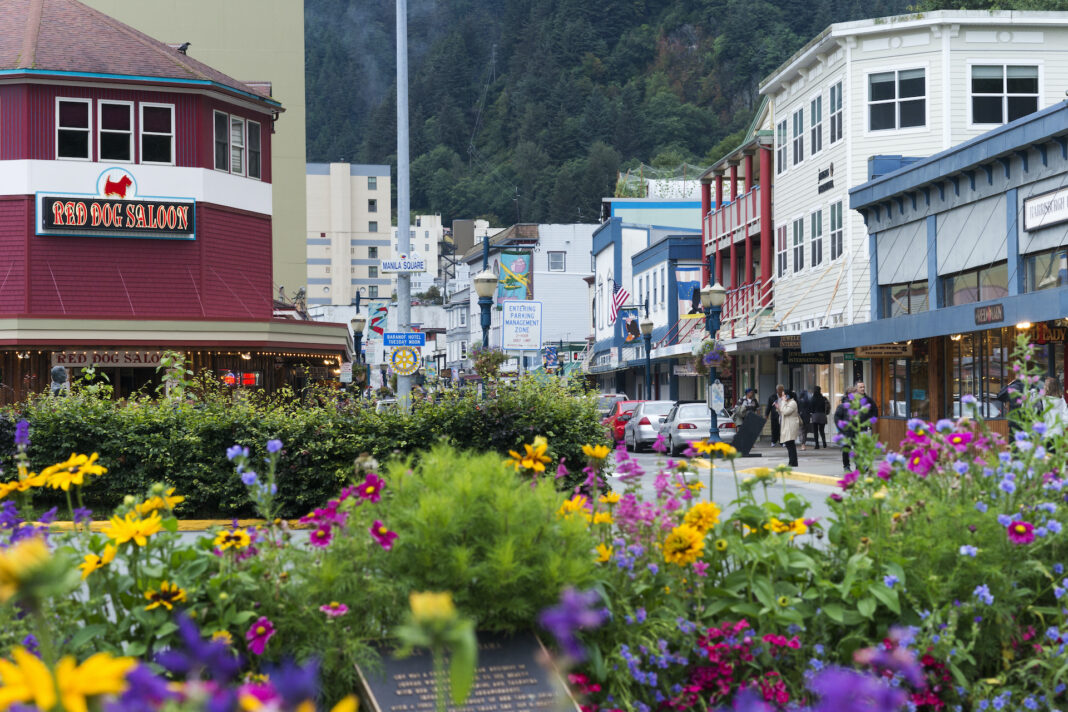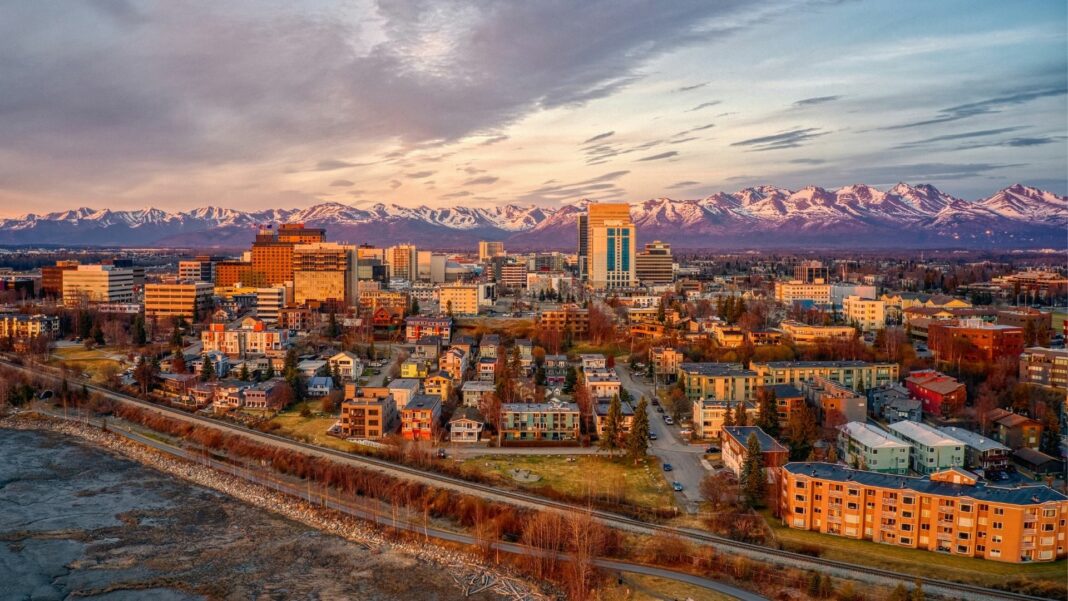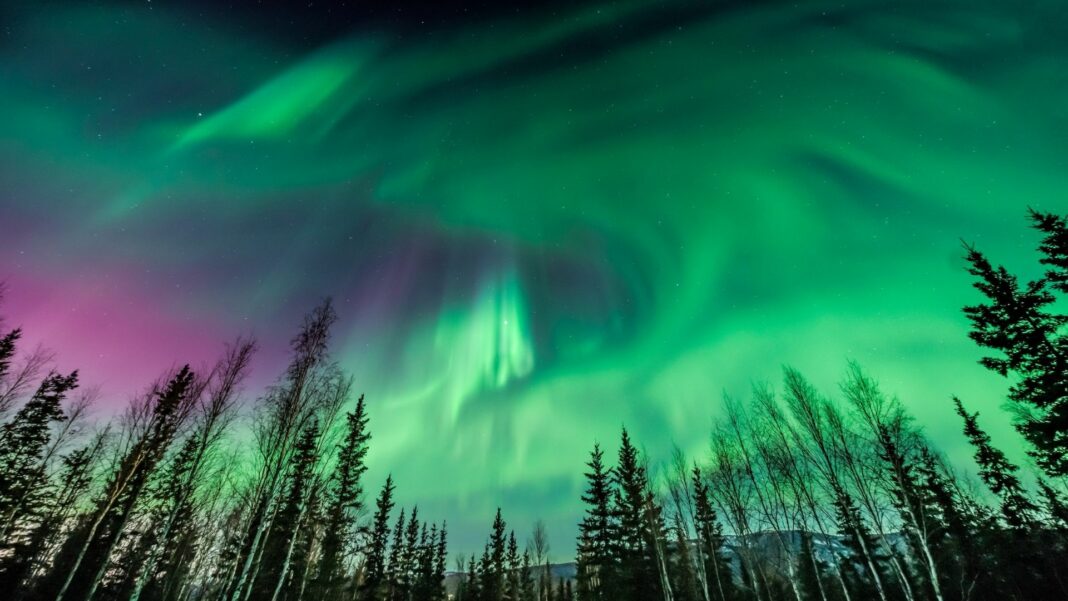
Ever wondered what cities are considered the best places to live in Alaska? If you’re not from Alaska, you may imagine snow-covered mountain peaks and craggy landscapes when you think about the state. While Alaska offers an incredible amount of natural beauty, you’ll find many more attractions and activities here to discover.
Alaska is the least densely populated state in the United States, but it is also the largest state in terms of territory. More than half of the state is federally owned land, encompassing wildlife refuges and national parks. This makes for a stunning backdrop at nearly every turn. From larger cities to family-friendly communities and tiny towns, Alaska practically has it all for first-time renters. Here are our picks for the best places to live in Alaska:
- Cordova
- Anchorage
- Juneau
- Wasilla
- Whittier
- Unalaska
- Kenai
- Fairbanks
- Kodiak
Alaska at a glance
Alaska is the largest state in the United States, known for its rugged terrain, stunning natural beauty, and unique lifestyle. The state’s economy is heavily dependent on the oil and gas industry, although fishing and tourism are also significant industries. The cost of living in Alaska can be high due to its remote location, but residents enjoy a high quality of life with access to outdoor activities like hiking, fishing, and skiing. The state has a diverse range of public and private schools, including many specialized programs for students. Popular attractions include Denali National Park, the Northern Lights, and the Iditarod Trail Sled Dog Race. Now that you know the basics, let’s get into the best cities in Alaska:
1. Cordova
Ideal for nature lovers and those seeking a close-knit community
- Population: 2,683
Cordova made our list as one of the best places to live in Alaska for many reasons, and the low crime rates, poverty levels, low unemployment rate, and reasonable housing prices all contributed. Cordova has a small-town vibe due to its tiny population of fewer than 3,000 people and is only accessible by ferry. The Cordova Historical Museum is a fun visit for families, and the Mount Eyak Ski area, with downhill skiing and snowboarding, is located nearby.
2. Anchorage
Perfect for those who enjoy cultural sites, outdoor activities, and a diverse community
- Population: 291,247

Anchorage is the largest city in Alaska. This location offers natural views of nearby Chugach State Park, Knik and Turnagain Arms, and Cook Inlet, in addition to a more urban feeling. Anchorage is home to some diverse cultural sites, including the Alaska Native Heritage Center, an educational institution that displays traditional crafts and replicated dwellings of this area’s indigenous people.
Living in Anchorage also permits residents to enjoy easy access to nearby wilderness areas, including the Talkeetna and Kenai mountains. Residents can also enjoy incredible skiing opportunities at Arctic Valley, Hilltop Ski Area, and Hillberg Ski Area. And with average rent prices at $1,200 for a 1-bedroom home or apartment, you won’t have to spend much to live in Alaska’s biggest city.
3. Juneau
Great for government workers and outdoor enthusiasts
- Population: 32,255

Juneau is Alaska’s state capital, which means it’s home to the state government and several other career opportunities. Found on Alaska’s panhandle, Juneau is not connected anywhere else in the state by road. Travelers need to take a boat or plane to get in or out. Juneau also tends to have milder winters than other parts of the state, making it an attractive place to live. Be prepared to pay the price, though; the average rent in Juneau for a 1-bedroom is $1,275.
Residents and visitors alike enjoy riding the Mount Roberts Tramway, visiting the Mendenhall Glacier, strolling the downtown area’s art galleries, and viewing indigenous art at the Sealaska Heritage Institute.
4. Wasilla
Ideal for those who want a more temperate climate
- Population: 9,054
If you work in or frequently travel to Anchorage but are looking for a small-town, more affordable place to live, consider Wasilla. Located near the George Park Highway, Wasilla is within an easily commutable distance from Anchorage, and many residents commute there for work. Since Wasilla is located farther inland, the community also has relatively more temperate weather than Anchorage.
Wasilla offers incredible outdoor attractions, including Lucile Lake, located in the middle of the city itself. Wasilla also used to be the starting point for Alaska’s famous Iditarod sled dog race, which now starts in Anchorage and ends in Nome.
5. Whittier
A nature lover’s paradise with a tiny population and access to outdoor activities like canoeing, kayaking, and hunting
- Population: 272
Whittier, Alaska, is a great destination and place to live for the nature buffs among us. Whittier is about 60 miles south of Anchorage and features glacier gazing, canoeing, kayaking, hunting, and more activities. With a population of under 300 people, it’s a tiny community. Known as the one-house town, Whittier offers several amenities for residents, including its school, hospital, and city government in one giant building. Whittier is linked to the outside world by a single-lane tunnel that operates on a timetable.
6. Unalaska
Suitable for those interested in the fishing industry
- Population: 4,254
The somewhat uncannily named town of Unalaska has a strong fishing industry. It serves as the economic hub for the Aleutian Islands, the chain of almost 100 islands that stretches southwest from the mainland of Alaska. Unalaska has higher housing prices, with the highest median household income found in the state. Still, Unalaska offers a low unemployment rate and one of the shortest commutes in the state.
7. Kenai
Perfect for fishing enthusiasts and outdoor lovers.
- Population: 7,424
Found at the places where the Kenai River lets out to the Cook Inlet of the Pacific Ocean, Kenai is locally famous for fishing opportunities. Indeed, eight of the 10 largest king salmons on record originated in Kenai. This city of about 7,000 people is slightly less than 200 miles from Anchorage. Kenai also offers affordable rent and housing prices.
8. Fairbanks
Ideal for nature enthusiasts and those who appreciate unique natural phenomena
- Population: 32,515

Located about 300 miles inland from the coast, Fairbanks, Alaska, is the state’s second-largest city. The Chena River winds its way through the center of the city, and in addition to the beautiful views the river provides, it offers opportunities for boating and fishing. For nature lovers, Fairbanks also offers unparalleled opportunities to see the famous aurora borealis, the northern lights, between August and April. Due to its location, Fairbanks also experiences 24 hours of sunlight each day from mid-May through late July and corresponding days of mostly darkness during the winter.
What locals say about living in Fairbanks, Alaska
“I was born and raised in Fairbanks and I lived there again for a couple years after I grew up. There’s a lot of snow most of the year but it never stopped me from finding things to do. There’s the Santa Claus House in North Pole, about 15 miles away from Fairbanks. There’s a lady who runs a reindeer ranch on her personal property. She takes people on hikes with her reindeer and you can pet them and hold their leads and take pictures. And of course Chena Hot Springs. At the hot springs you can horseback ride or take a dog sled ride or ride in a bush plane in the summer.”
Reddit user Miss_Westeros
9. Kodiak
Best for those interested in trading and island living
- Population: 5,581
Kodiak, Alaska, is a fishing and trading center located on Kodiak Island. It also has a long history as a regional trading center and was home to the long-established Alutiiq tribe and later housed Russian settlers during the late 19th century.
Kodiak is only accessible by plane or ferry boat, and at a distance of 400 miles, it’s also fairly far from Anchorage. Kodiak offers activities for locals to enjoy, such as the Kodiak Maritime Museum, found across a bridge on Near Island, and Fort Abercrombie State Historical Park, with opportunities for camping, hiking, swimming, and more outdoor recreational activities.
What to know before moving to Alaska
Moving to Alaska is a unique and exciting opportunity, but it requires careful consideration due to its remote and challenging environment. Here are several factors renters should keep in mind before making the move:
- Climate and weather: Alaska has extreme seasonal variations, with long, harsh winters and cool summers. Consider if you are comfortable with the cold temperatures, snowfall, and limited daylight during the winter months.
- Location: Alaska is vast, and the specific location matters greatly. The state offers diverse living options, from urban centers like Anchorage to rural and remote areas. Research and choose the location that aligns with your lifestyle and job opportunities.
- Cost of living: Alaska is known for its higher cost of living. Groceries, utilities, and housing expenses can be more expensive than in other states. Ensure your budget can accommodate these higher costs.
- Job market: Investigate the local job market, as employment opportunities may vary by region. Some industries, such as fishing, tourism, and oil, are prominent in Alaska.
- Housing: Find suitable housing options that meet your needs. Depending on the location, you might consider single-family homes, apartments, or rural cabins. Be aware that rental housing availability can be limited in some areas.
- Transportation: Alaska’s remote nature means transportation can be challenging. Access to major roads, public transportation, and proximity to work should factor into your decision.
- Wildlife and nature: Embrace Alaska’s natural beauty and wildlife, but also be aware of potential encounters with wild animals, such as bears and moose. Understand safety precautions and wildlife-aware living.
- Outdoor activities: If you’re an outdoor enthusiast, Alaska is a paradise. Make sure to explore the recreational opportunities available, such as hiking, fishing, skiing, and snowboarding.
- Utilities and services: Services like healthcare, groceries, and schools may be more limited and costly in remote areas. Consider the proximity to these essential services in your chosen location.
- Isolation: Alaska’s remote regions can be isolating, especially during the long, dark winter months. Consider how you will handle potential isolation and the need for a robust support system.
- Legal residency: Confirm residency requirements and registration processes, especially if you plan to live in Alaska permanently.
- Taxes: Research the state’s tax structure, which includes no state income tax and significant reliance on oil-related revenue. However, property and sales taxes can vary by location.
- Insurance: Consider the necessity for additional insurance, such as earthquake and avalanche coverage, which can be relevant in Alaska.
- Emergency preparedness: Due to the state’s potential for natural disasters like earthquakes and tsunamis, it’s essential to have an emergency preparedness plan in place.
- Cultural awareness: Alaska is home to diverse cultures and indigenous communities. Understanding and respecting these cultures is important when living in the state.
Frequently asked questions about living in Alaska
The cost of living in Alaska is higher than the U.S on average, but determining your exact cost of living will depend on which city you call home. Anchorage, for example, is 27% higher than the U.S average, while the cost of living in Wasilla is 17% higher than the national average.
As of 2021 the population of Alaska was 732,637.
Alaska is the largest state in the country and is known for its breathtaking views, and wide range of wildlife. With opportunities to explore glaciers, mountains, and lakes, Alaska is a dream for outdoor enthusiasts.
Oil, gas, fishing, and tourism are among the largest industries in Alaska.
Alaska has the lowest taxes in the country, with no statewide income tax or sales tax. Local governments can impose a sales tax up to 7.85%.
Whether Alaska is a good place to live depends on your personal preferences and priorities. The state offers a unique lifestyle with stunning natural beauty, outdoor activities, and a strong sense of community. However, the harsh climate, isolation, and high cost of living may not be suitable for everyone. It’s important to research and consider all aspects of living in Alaska before making a decision.
Alaska’s transportation network includes highways, airports, and ferries, connecting major cities and remote communities. Many residents own vehicles for commuting, but air travel is essential for reaching distant regions not accessible by road.
Alaska celebrates its rich cultural heritage through various events and festivals. Native Alaskan traditions are celebrated through music, dance, and art. Additionally, visitors and residents can explore museums, galleries, and cultural centers across the state.
In some parts of Alaska, winter days are noticeably shorter with limited daylight. While this can be an adjustment, Alaskans adapt with indoor activities, holiday celebrations, and enjoying winter sports like skiing and snowboarding.
Alaska has it all, from tiny towns to (relatively) big cities that still manage to offer gorgeous natural settings. Explore some of the best places to live in Alaska and find your next home on Zumper.



